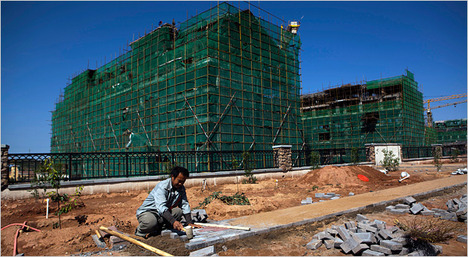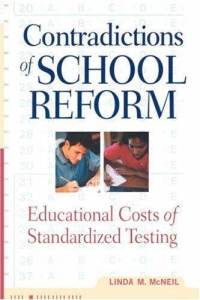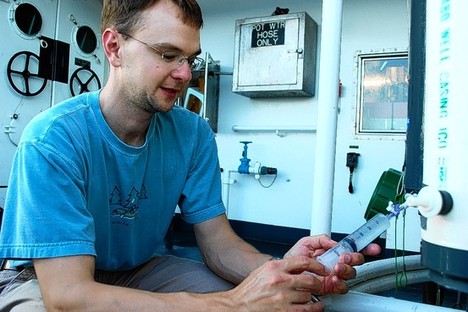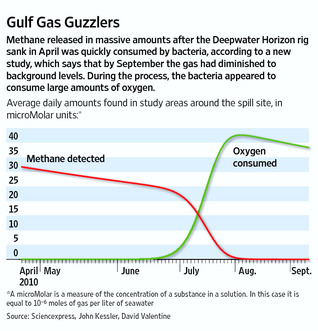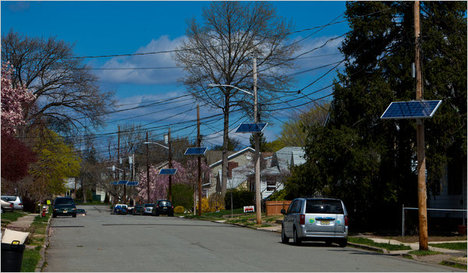 “Solar panels along Fifth Street in Fair Lawn, N.J. Residents elsewhere were upset they had not been notified before installation.” Source of caption and photo: online version of the NYT article quoted and cited below.
“Solar panels along Fifth Street in Fair Lawn, N.J. Residents elsewhere were upset they had not been notified before installation.” Source of caption and photo: online version of the NYT article quoted and cited below.
(p. A1) ORADELL, N.J. — Nancy and Eric Olsen could not pinpoint exactly when it happened or how. All they knew was one moment they had a pastoral view of a soccer field and the woods from their 1920s colonial-style house; the next all they could see were three solar panels.
“I hate them,” Mr. Olsen, 40, said of the row of panels attached to electrical poles across the street. “It’s just an eyesore.”
. . .
(p. A3) New Jersey is second only to California in solar power capacity thanks to financial incentives and a public policy commitment to renewable energy industries seeded during Gov. Jon S. Corzine’s administration. . . .
Some residents consider the overhanging panels “ugly” and “hideous” and worry aloud about the effect on property values.
Though nearly halfway finished, the company’s crews have encountered some fresh resistance in Bergen County, where cities, villages and boroughs are in varying stages of mortification. Local officials have forced a temporary halt in many towns as they seek assurances that they will not be liable in case of injury, but also to buy time for suggesting alternative sites — like dumps — to spare their tree-lined streets.
And here in Oradell, at least one panel has gone missing.
. . .
The case of the missing panel has been referred to local law enforcement.
“PSE&G takes a very dim view of people tampering with the equipment,” said Francis Sullivan, a company spokesman, “but that’s secondary to the fact that it’s just a dangerous idea.” All the units are connected to high-voltage wires.
Richard Joel Sr., a lawyer in town, said a panel close to his house had been removed, but demurred when asked if he knew details.
“I’m not saying what happened,” he said.
For the full story, see:
MIREYA NAVARRO. “Solar Panels Rise Pole by Pole, Followed by Gasps of ‘Eyesore’.” The New York Times (Thurs., April 28, 2011): A1 & A3.
(Note: ellipses added.)
(Note: the online version of the story is dated April 27, 2011.)


